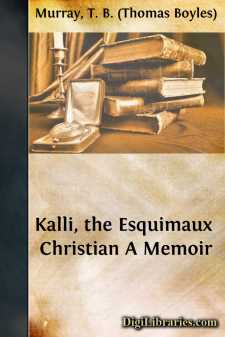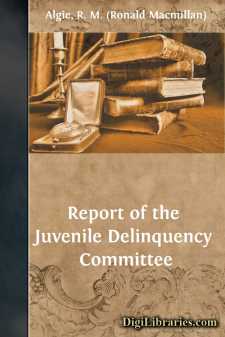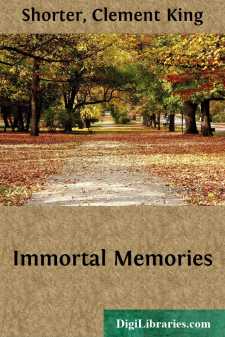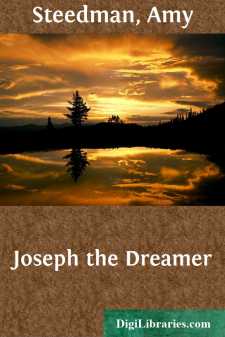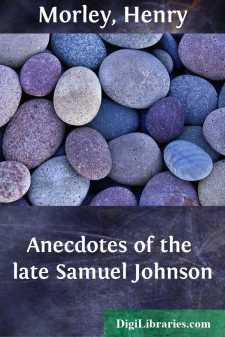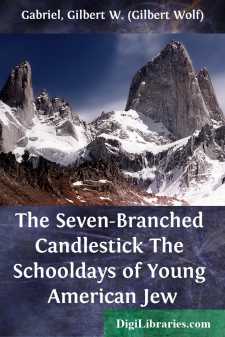Non-Classifiable
- Non-Classifiable 1768
Non-Classifiable Books
Sort by:
LEARNING TO TEACH long, busy street in San Francisco. Innumerable small shops lined it from north to south; horse cars, always crowded with passengers, hurried to and fro; narrow streets intersected the broader one, these built up with small dwellings, most of them rather neglected by their owners. In the middle distance other narrow streets and alleys where taller houses stood, and the windows,...
more...
KALLIHIRUA THE ESQUIMAUX. Kallihirua, notwithstanding the disadvantages of person (for he was plain, and short of stature, and looked what he was,—an Esquimaux), excited a feeling of interest and regard in those who were acquainted with his history, and who knew his docile mind, and the sweetness of his disposition. Compliance with the precept in the Old Testament, "Love ye the stranger ,...
more...
A DAY WITH KEATS About eight o'clock one morning in early summer, a young man may be seen sauntering to and fro in the garden of Wentworth Place, Hampstead. Wentworth Place consists of two houses only; in the first, John Keats is established along with his friend Charles Armitage Brown. The second is inhabited by a Mrs. Brawne and her family. They are wooden houses, with festooning draperies of...
more...
ORDERS OF REFERENCE Extracts from the Journals of the House of Representatives Tuesday, the 28th Day of September 1954 Ordered, "That a Select Committee be appointed, consisting of ten Members, to consider the Report of the Special Committee on Moral Delinquency in Children and Adolescents (H-47, 1954); the Committee to make such recommendations or observations as it thinks fit to the House or the...
more...
by:
Clarence Darrow
Mr. Darrow said: I feel very grateful to you for the warmth and earnestness of your reception. It makes me feel sure that I am amongst friends. If I had to be tried again, I would not mind taking a change of venue to Portland (applause); although I think I can get along where I am without much difficulty. The subject for tonight's talk was not chosen by me but was chosen for me. I don't know...
more...
PREFATORY The following addresses were delivered at the request of various literary societies and commemorative committees. They amused me to write, and they apparently interested the audiences for which they were primarily intended. Perhaps they do not bear an appearance in print. But they are not for my brother-journalists to read nor for the judicious men of letters. I prefer to think that...
more...
by:
Amy Steedman
The Story of Joseph This is the story of Joseph, the boy who had the strangest and most exciting adventures of any boy who ever lived. Joseph was but a little lad when his mother died. His father, Jacob, had loved that mother more than any one else in the world, so that when she died leaving Joseph and a baby brother, Benjamin, all the love in the father's heart turned to his two little sons. The...
more...
by:
Henry Morley
INTRODUCTION Mrs. Piozzi, by her second marriage, was by her first marriage the Mrs. Thrale in whose house at Streatham Doctor Johnson was, after the year of his first introduction, 1765, in days of infirmity, an honoured and a cherished friend. The year of the beginning of the friendship was the year in which Johnson, fifty-six years old, obtained his degree of LL.D. from Dublin, and—though he...
more...
BY WAY OF PROLOGUE "Years of Plenty" was the name an Englishman recently gave to a book of his school days. My own years of secondary school and college were different from his, by far, but no less full. I shall only say by way of preface that they numbered seven. There were two of them at high school, one at a military school on the Hudson, and four at our city's university. Seven in all....
more...
by:
Jonathan Swift
PREFACE The history of the publication of the Journal to Stella is somewhat curious. On Swift's death twenty-five of the letters, forming the closing portion of the series, fell into the hands of Dr. Lyon, a clergyman who had been in charge of Swift for some years. The letters passed to a man named Wilkes, who sold them for publication. They accordingly appeared in 1766 in the tenth volume of Dr....
more...



